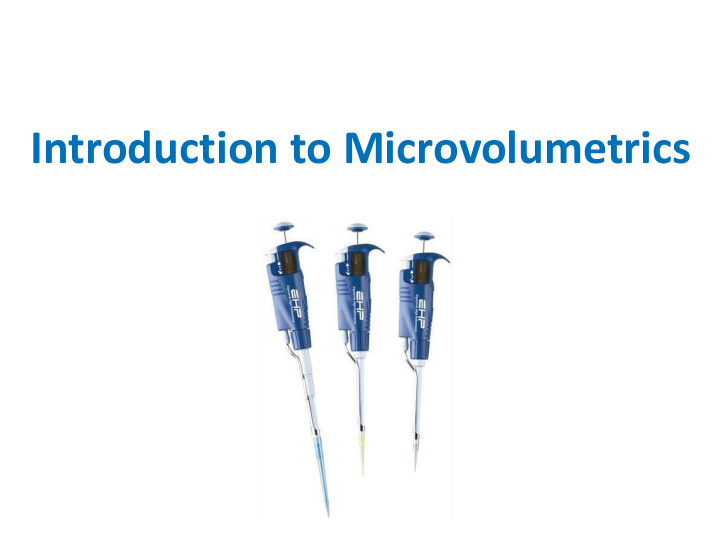



Introduction to Microvolumetrics
Other Pipettes
Why Micropipettes? • Micropipettes measure in microliters (µL) • 1000 µL in 1 mL Why are such small volumes used in molecular biology?
Micropipette Size and Volume Range • p20 – Volume range is 2-20 µLs • p200 – Volume range is 20-200 µLs • P1000 – Volume range is 100-1000 µLs Never exceed the upper or lower limits of these pipettes! If you need to dispense 20 µLs of a dye, which micropipette should you use?
Micropipettes
Parts of the Micropipette
The “Stops” of a Micropipette
Pipetting Techniques • Always hold the micropipette and tube at eye level when loading or dispensing samples • Do not place the tip at the bottom of the tube
Micropipetting “N evers ” • Never use micropipette without a tip • Never lay micropipette down with sample in the tip • Never point the micropipette up • Never let the plunger button snap back • Never set the pipette below or above its intended range
Reading a p20 Micropipette
Reading a p200 Micropipette
Lab 2: Measuring Very Small Volumes
Notebook Lab Objectives • Become familiar with the small volumes of solutions used in molecular biology • Introduce proper use of the micropipette • Practice using the micropipette
Notebook Micropipette Technique 1. Always hold the micropipette in the vertical position. 2. Gently twist the dial to desired volume. 3. Add disposable pipette tip. 4. Slowly press the plunger to first stop. 5. Place the tip into the liquid and slowly release the plunger to retrieve liquid. 6. To dispense liquid, press plunger past first stop to second stop. 7. Hold the plunger down as you remove the pipette. 8. Slowly release the plunger and eject the tip.
Notebook Practicing with a p20 Micropipette
Checking for Accuracy (Centrifuge)
Notebook Assessment • Respond to assessment questions #1-5 in your lab notebook • Complete the micropipette windows
Notebook Micropipetting Secret Code Matrix
Notebook
Recommend
More recommend